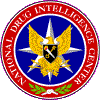
|
National
Drug Intelligence Center
Ohio High Intensity Drug Trafficking Area
Drug Market Analysis
June 2007
Strategic Drug Threat Developments
-
The control that Mexican drug trafficking organizations (DTOs)
exert over wholesale drug distribution in the Ohio HIDTA region
is unrivaled and increasing. Mexican DTOs have supplanted Dominican
and Jamaican DTOs as the principal transporters and wholesale distributors
of cocaine, marijuana, and heroin in the region.
-
Columbus has emerged as a regional distribution center for Mexican
brown powder heroin and Mexican black tar heroin that are supplied
to drug markets throughout Ohio, West Virginia, and western Pennsylvania.
Mexican brown powder heroin and Mexican black tar heroin are now
the most common types of heroin available in most areas of the Ohio
HIDTA region.
-
Heroin use is increasing in the Ohio HIDTA region and throughout
the state, predominantly among young Caucasian adults, ages 18 to
25. Many new abusers of heroin, particularly among this group, had
previously abused prescription narcotics.
-
Methamphetamine production in the Ohio HIDTA counties has decreased
significantly over the last year; the number of laboratory, dumpsite,
and chemical/glass/equipment seizures decreased from 124 in fiscal
year (FY) 2005 to 94 in FY2006. The 2006 Ohio law restricting pseudoephedrine
sales most likely contributed to this decrease in methamphetamine
production.
-
Mexican DTOs are capitalizing on the decrease in local methamphetamine
production by marketing Mexican methamphetamine in some areas of
the HIDTA region, particularly in the Columbus area.
-
Law enforcement reporting indicates that the diversion and abuse
of pharmaceutical drugs are increasing in parts of the Ohio HIDTA
region, particularly in Columbus and Toledo.
|
Drug Trafficking
Organizations, Criminal Groups, and Gangs
Drug trafficking organizations are complex
organizations with highly defined command-and-control structures
that produce, transport, and/or distribute large quantities
of one or more illicit drugs.
Criminal groups operating in the United States
are numerous and range from small to moderately sized, loosely
knit groups that distribute one or more drugs at the retail
and midlevels.
Gangs are defined by the National Alliance of
Gang Investigators' Associations as groups or associations
of three or more persons with a common identifying sign,
symbol, or name, the members of which individually or collectively
engage in criminal activity that creates an atmosphere of
fear and intimidation.
|
To Top
To Contents
To Next Page
To Publications Page
To Home Page
|

